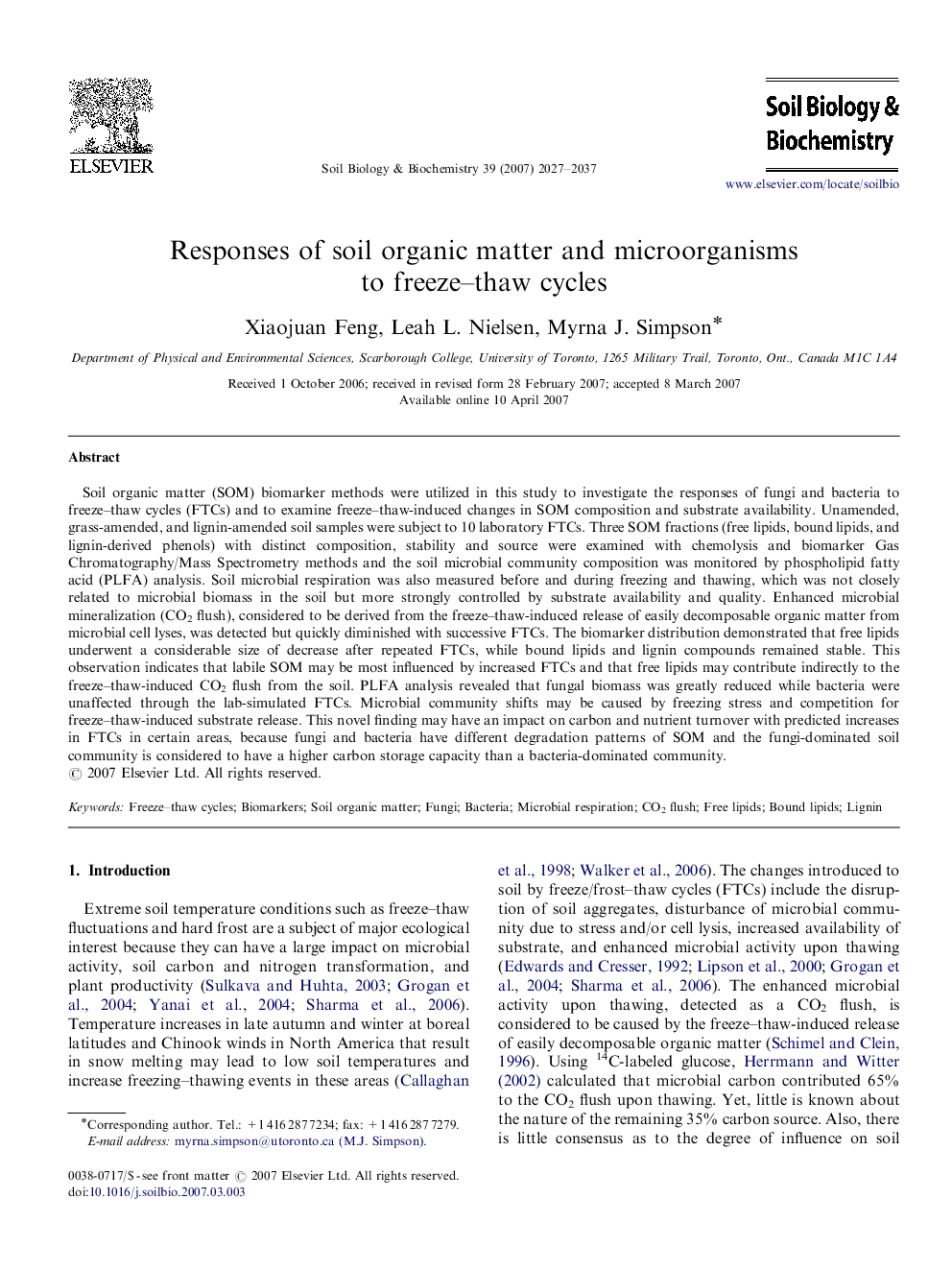| Article ID | Journal | Published Year | Pages | File Type |
|---|---|---|---|---|
| 2026067 | Soil Biology and Biochemistry | 2007 | 11 Pages |
Soil organic matter (SOM) biomarker methods were utilized in this study to investigate the responses of fungi and bacteria to freeze–thaw cycles (FTCs) and to examine freeze–thaw-induced changes in SOM composition and substrate availability. Unamended, grass-amended, and lignin-amended soil samples were subject to 10 laboratory FTCs. Three SOM fractions (free lipids, bound lipids, and lignin-derived phenols) with distinct composition, stability and source were examined with chemolysis and biomarker Gas Chromatography/Mass Spectrometry methods and the soil microbial community composition was monitored by phospholipid fatty acid (PLFA) analysis. Soil microbial respiration was also measured before and during freezing and thawing, which was not closely related to microbial biomass in the soil but more strongly controlled by substrate availability and quality. Enhanced microbial mineralization (CO2 flush), considered to be derived from the freeze–thaw-induced release of easily decomposable organic matter from microbial cell lyses, was detected but quickly diminished with successive FTCs. The biomarker distribution demonstrated that free lipids underwent a considerable size of decrease after repeated FTCs, while bound lipids and lignin compounds remained stable. This observation indicates that labile SOM may be most influenced by increased FTCs and that free lipids may contribute indirectly to the freeze–thaw-induced CO2 flush from the soil. PLFA analysis revealed that fungal biomass was greatly reduced while bacteria were unaffected through the lab-simulated FTCs. Microbial community shifts may be caused by freezing stress and competition for freeze–thaw-induced substrate release. This novel finding may have an impact on carbon and nutrient turnover with predicted increases in FTCs in certain areas, because fungi and bacteria have different degradation patterns of SOM and the fungi-dominated soil community is considered to have a higher carbon storage capacity than a bacteria-dominated community.
